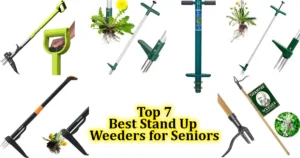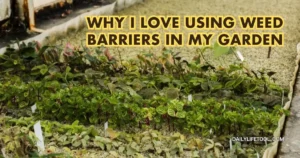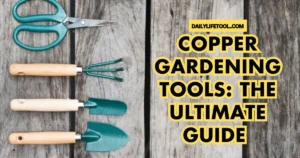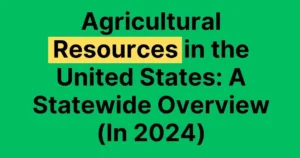Which season is the best for growing organic vegetables and fruits depends on what kind of vegetables or fruits you grow.
The weather and climate of your area, and the amount of sunlight that reaches your garden.
Some vegetables and fruits, like Peppers, Eggplant, Tomatoes, Beans, Papayas, Blueberries, Blackberries, Mangoes, and Watermelons, grow well in the warm season.
Some plants grow well in the cold season, such as broccoli, carrots, lettuce, apples, pears, plums, cherries, etc.
In this article, we learn about the Best Seasons for Growing Plants, Vegetables, and Fruits at Home.
In the USA, we have four seasons. Each season has different characteristics for gardening.
- Winter season
- Spring
- Summer
- Fall / Autumn
Hi everyone, I’m Victoria Bernes, I’m a housewife. I love gardening; it’s my favorite hobby. The vitality of gardens fascinates me, and I have a garden in my backyard.
About 7-8 years ago, I started gardening as a hobby, and now it’s become my passion. I spend my free time in my garden.
To be a successful gardener, you need to know some essential facts.
FACTS: Perfect Sunlight, Good Soil, Location, Best month for planting, Prepare garden bed, Essential tools you need, Water your garden at the right time, Mulch your garden, Take care of your garden regularly, hybrid fruit, garden features, bird food plants should also be known about these.
When we start gardening, we face some basic questions. Such as:
- Which season is best for growing plant
- What season do plants grow fast
- When is the best time to start a vegetable garden
- What season is best for starting a fruit garden
Table of Contents
What you will achieve by reading this article
- Learn the best seasons for planting vegetables and fruits in the USA
- Discover the difference between warm-season and cool-season vegetables
- Understand how to choose plants based on your climate and sunlight conditions
- Gain the confidence to start planning your vegetable or fruit garden
Best Seasons for Growing Plants Vegetables and Fruits at Home
Best seasons for growing plants

What are the best seasons for growing plants?
The best growing seasons usually depend on your climate, how much sunlight the garden gets, and what type of garden you are planting.
The best planting season is between spring and fall, and summer is the most significant growing season.
Spring Season

In winter, the temperature drops, the days become shorter, and the growth of plants slows due to less sunlight.
Spring’s mild temperatures and sunlight boost plant growth and development. Daylight slowly increased. Good sunlight helps plants grow stronger and thrive as daylight grows.
One of the most beautiful parts of spring gardening is the rapid growth and flowering of mixed plant species. This exciting season is when everything grows fast, and baby vegetables are ready to harvest.
In spring, you can plant:
- Beets
- Broccoli
- Potato
- Sweet corn
- Peas
- Kohlrabi
- Mushrooms
- Mint
- Leeks
- Lettuce
- Spring onion/green onion
- Banana
- Lemons
- Tangelo
- Cherries
- Tulip
- Daffodil
- Bluebell
- Primrose
- Crocus
- Geranium
- Petunia
- Clematis
- Azaleas
- Lilac
- Rose of Sharon
Summer Season

Summer is the ideal time to plant because of the increased daylight. More prolonged exposure to sunlight helps plants grow stronger and healthier.
Summer brings with it hot weather. This hot weather plant likes a lot; the sun’s warmth helps the plant grow.
Summer is the ideal time for planting when the soil is warm and moist. Warm soil helps plant roots grow. The sun is at its peak during summer.
The sun’s temperature gives plants the energy to produce food through photosynthesis.
In summer, you can plant:
- Tomatoes
- Eggplants
- Florence fennel
- Zucchini
- Corn
- Cucumber
- Beans
- Peppers
- Pumpkins
- Squashes
- Celery root
- Watermelons
- Mangoes
- Pineapples
- Grape
- Blueberries
- Raspberries
- Blackberries
- Strawberries
- Figs
- Apricots
- Thyme
- Rosemary
- Oregano
- Chives
- Zinnia
- Cosmos
- Daisy
- Sunflower
- Lavender
Autumn / Fall season
The weather cools down as summer passes, but the soil remains warm. This warmth in the soil makes it attractive for plant roots to grow.
In autumn, the daylight decreases, but the days are warm with occasional rain. Fall planting is the best time to establish trees and shrubs fully.
The gardens are full of plants, vegetables, fruits, and flowers in autumn.
In the Autumn / Fall season, you can plant:
- Brussel sprouts
- Chicories
- Cabbage
- Celery
- Sweet potato
- Carrots
- Cranberries
- Kumquats
- Pomegranates
- Bidens
- Calibrachoa
- Canna lily
- Garden mums
- Marguerite daisies
- Hydrangeas
- Black-Eyed Susans
- Dahlias
Best Seasons for Growing Vegetables

What are the best seasons for growing vegetables? The answer to this question depends on what vegetables you want to grow.
Spring and fall are the most suitable times to plant trees. Summer is the biggest growing season.
However, each vegetable grows well in different seasons; some grow well in warm weather, and some grow well in cold weather.
Two seasons of vegetables are:
(i) Warm seasons
(ii) Cold seasons
Warm season: Warm season vegetables require high heat and plenty of sunshine
These seasonal vegetables take longer to grow.
These vegetables are best grown in the warm season.
Cold seasons: Cool-season vegetables do not like high heat. So, the best time to grow them is early spring or late summer.
Usually, the temperature is freezing in early spring, and the vegetables mature before summer.
It can be transplanted in late summer; transplanting in late summer will allow the tree to mature in the cooler temperatures of fall.
Here is a general guide to the best seasons for growing different types of vegetables

Warm-season vegetables are tomato, pepper, cucumber, pumpkin, summer squash, sweet potato, eggplant, zucchini, corn, and watermelon.
These vegetables are best grown in the warm season.
Cold-season vegetables are broccoli, beets, cabbage, beans, green garlic, asparagus, lettuce, onion, kale, brussels sprouts, peas and radish.
These vegetables are best grown in the cold season.
Best seasons for growing fruits

What is the best season for growing fruits? The answer to this question depends on what fruit you are growing. Different types of fruits grow well in other seasons.
It is possible to produce good fruit in all seasons of the year. It depends on your garden’s temperature, humidity, sunlight, and climate.
Some fruits like Blackberries, mangoes, blueberries, sour cherries, and peaches are warm seasonal fruits, and some fruits like apples, mandarins, pears, kiwis, bananas, and tangerines are cold seasonal fruits.
Here is a general guide to the best seasons for growing different types of fruits
If your garden reaches the temperature of full sunlight, then plant warm seasonal fruits because these fruits grow well in sunlight.
Warm seasonal fruits are Mangoes, blueberry, watermelon, pineapple, blackberry, apricots, peaches, papaya, starfruit, raspberry, and honeydew melon.
And if your garden has low sunlight temperature, then you should plant cold seasonal fruits; cold seasonal fruits grow best in low sunlight.
Cold seasonal fruits are Apple, cranberry, fig, lime, kiwi, pomegranate, grape, pear, guava, Clementine, strawberry and banana.
3 Most Popular vegetables grown in the home garden in the USA?
Lettuce
Lettuce is a trendy winter vegetable. Most people eat lettuce as a green salad.
Lettuce matures quickly and can even be grown in containers or raised beds. Lettuce can mature in 45 days or 85 days.
There are many varieties, including loose-leaf, butterhead, romaine and crisphead. Lettuce contains vitamins C, D, calcium, and iron.
Tomatoes
Tomatoes are a trendy crop in America. Most people love to grow and eat tomatoes, Which are generally a warm-season crop.
A vegetable garden is incomplete without tomato plants.
Tomatoes can be planted in raised beds, containers, or directly into garden soil. Tomato plants need temperatures above 60 F.
If the temperature is lower than this, the growth and development of the tomato plant will be reduced, the crop’s quality and appearance will be lost, and there will be many varieties of tomatoes. Examples: cherry tomatoes, San Marzano, Roma, and blue tomatoes.
Peppers
Pepper plants grow well in warm seasons. Peppers are a staple of American gardens.
These peppers can be grown in containers or directly in the ground, and plants grow well in sandy loam soil.
Peppers generally enhance the flavor of food. There are wide varieties of chilies, such as bell peppers, banana peppers, pimiento, and rich carmen peppers.
Here are some tips for choosing the right plants for your climate and garden
Here are some tips to help you choose the perfect plants for your garden’s climate:
- Know your climate
- Consider your microclimate
- Choose plants native to your region.
- Research the plant’s growing requirements.
- Consider your preferences
What are some resources for learning more about gardening?
There are many resources available to help you on your gardening journey. Local Cooperative Extension offices offer educational programs and gardening advice for your region. Online resources, gardening magazines, and books are also excellent sources of information.
Conclusion
Gardening is a beautiful hobby that allows you to grow your fresh produce and enjoy the beauty of nature.
This article is an excellent resource for beginner gardeners in the USA who want to know when to plant vegetables and fruits.
By understanding the different growing seasons (spring, summer, fall) and temperatures (warm vs. excellent season), you can choose the right plants for your garden and enjoy a bountiful harvest.
The article also provides tips for choosing plants based on climate and sunlight availability.
Next steps:
After reading this article, check out our follow-up article, “A Beginner’s Guide to Planning Your Garden (Just 9 Steps)“.
This article will walk you through the steps of creating a successful garden plan, including choosing a location, selecting plants, and creating a planting schedule.
FAQs
What are the three most popular vegetables grown in home gardens in the USA?
The article mentions lettuce, tomatoes, and peppers as some of the most popular vegetables grown in home gardens in the USA.
What is the biggest growing season of the year?
Summer is generally considered the biggest growing season due to the long days and warm temperatures.
What is the best time to plant trees and shrubs?
Spring and fall are the most suitable times to plant trees and shrubs.
Can I grow fruits and vegetables in all seasons?
Yes, it is possible to produce fruits and vegetables in all seasons depending on the type of plant and your climate.
Some plants require warm weather, while others prefer cooler temperatures.
How do I choose the right plants for my climate and garden?
The article provides several tips for choosing plants for your climate and garden, including knowing your climate zone, considering your microclimate, selecting plants native to your region, researching the plant’s growing requirements, and evaluating your preferences.
What are the benefits of knowing the best seasons for planting?
Knowing the best seasons for planting will help your vegetables and fruits thrive.
Planting at the right time ensures they receive the optimal sunlight, temperature, and moisture levels for proper growth and development.
What is the difference between warm-season and cool-season vegetables?
Warm-season vegetables prefer hot weather and plenty of sunshine. They typically take longer to mature and should be planted in late spring or early summer.
Cool-season vegetables, on the other hand, don’t tolerate high heat well. They grow best in early spring or fall when the temperatures are cooler.
What is the difference between warm-season and cool-season fruits?
Similar to vegetables, warm-season fruits benefit from full sunlight and hot temperatures.
Conversely, cool-season fruits perform better in cooler weather and with less direct sunlight.
How can I find out my USDA hardiness zone?
The USDA hardiness zone map divides the United States into different zones based on average annual minimum temperatures.
Knowing your zone will help you choose plants best suited to your climate. You can find your USDA hardiness zone by searching online.
What if I have limited sunlight in my garden?
Don’t despair! Many cool-season vegetables and fruits can tolerate partial shade. Researching shade-tolerant varieties will allow you to enjoy a productive garden even with less sunlight.
What are some tips for choosing plants for my garden?
1. Know your climate: Consider your USDA hardiness zone and average rainfall patterns.
2. Consider your microclimate: Microclimates within your garden might have different sun exposure or wind patterns.
3. Choose plants native to your region: Native plants are often well-adapted to your local climate and require less maintenance.
4. Research the plant’s growing requirements: Plants’ sunlight, water, and soil preferences vary.
5. Consider your preferences: Choose vegetables, fruits, and flowers you and your family enjoy.
By following these tips and utilizing the information in this article, you can set yourself up for success in your home garden.
Discover the best gardening tools and essentials thoughtfully selected by Daily Life Tools for your success. Cultivate your green paradise today.







